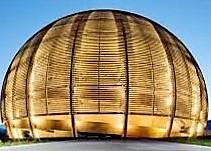Speaker
Description
JRC Geel operates a neutron time-of-flight facility, based on an electron accelerator. At 11 flight paths experiments can be performed simultaneously, with available flight paths ranging from 5m to 400 m. Experimental setups to determine total and reaction cross sections ( capture, elastic and inelastic shattering, fission and charged particle reactions ) are available. Furthermore, during the last year a new beamline for experiments to determined gamma-ray induced reactions has been installed in the target hall.
While most of the experimental work is focussed on nuclear (energy) applications, regularly cross section also of interest for astrophysical problems are measured. This is mostly in collaboration with partners from the n_TOF collaboration.
Examples for such nuclei of common interest are transmission and capture experiments using isotopically enriched Zr and Gd samples. Besides capture and transmission experiments, special set-ups were installed by external users to study the 26Al(n,) and 16O(n,) reactions. These examples will be discussed in detail with a special emphasis on 16O(n,a) and the inverse 13C(a,n) reaction. A methodology for normalization of the cross section 16O(n,a) will be discussed. This approach should help to understand and resolve the discrepancies on the cross section normalization of approx. 20%, a discrepancy that has haunted both the reactor and the astrophysics community for well more than a decade.
